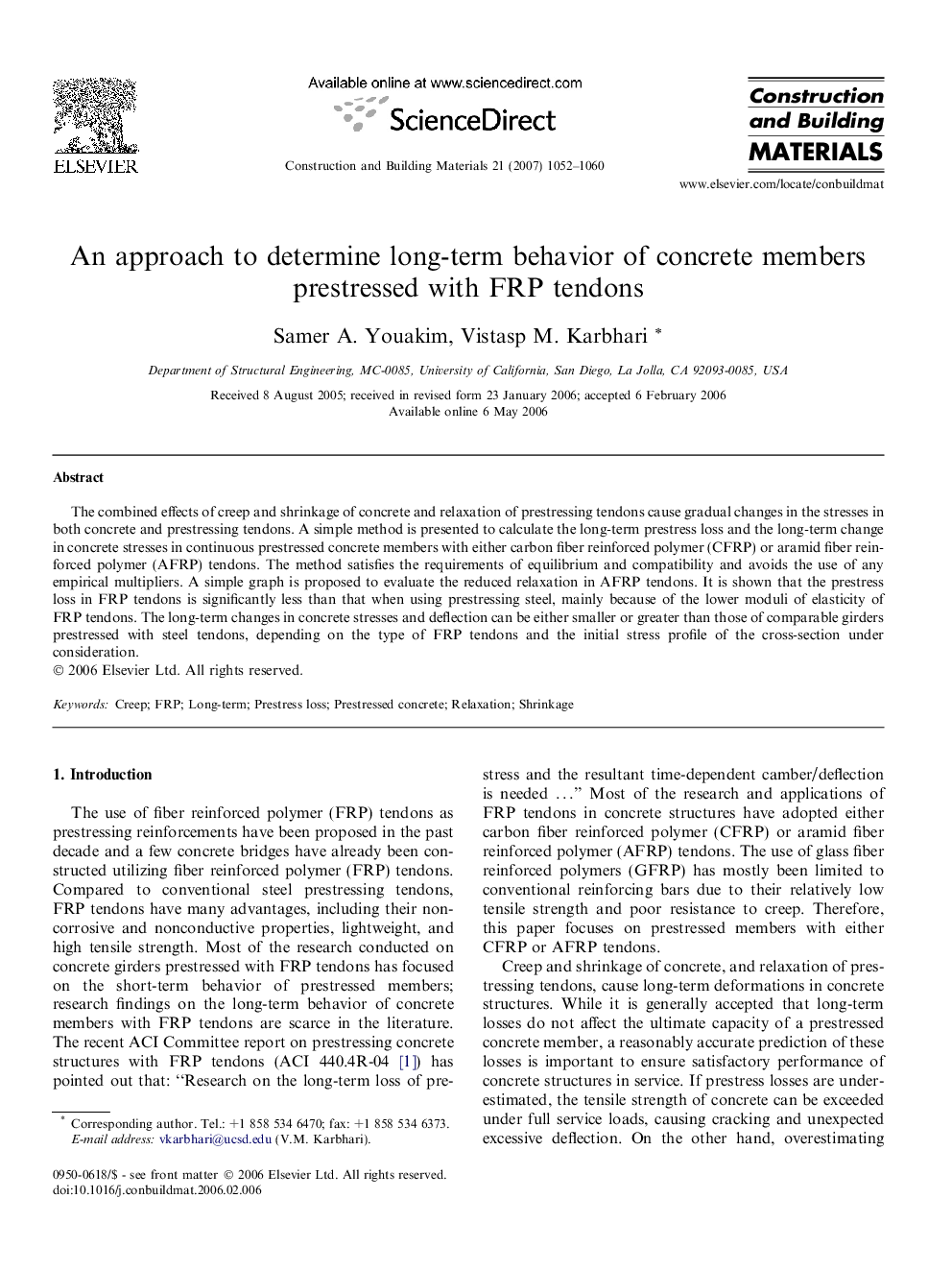| Article ID | Journal | Published Year | Pages | File Type |
|---|---|---|---|---|
| 261168 | Construction and Building Materials | 2007 | 9 Pages |
The combined effects of creep and shrinkage of concrete and relaxation of prestressing tendons cause gradual changes in the stresses in both concrete and prestressing tendons. A simple method is presented to calculate the long-term prestress loss and the long-term change in concrete stresses in continuous prestressed concrete members with either carbon fiber reinforced polymer (CFRP) or aramid fiber reinforced polymer (AFRP) tendons. The method satisfies the requirements of equilibrium and compatibility and avoids the use of any empirical multipliers. A simple graph is proposed to evaluate the reduced relaxation in AFRP tendons. It is shown that the prestress loss in FRP tendons is significantly less than that when using prestressing steel, mainly because of the lower moduli of elasticity of FRP tendons. The long-term changes in concrete stresses and deflection can be either smaller or greater than those of comparable girders prestressed with steel tendons, depending on the type of FRP tendons and the initial stress profile of the cross-section under consideration.
